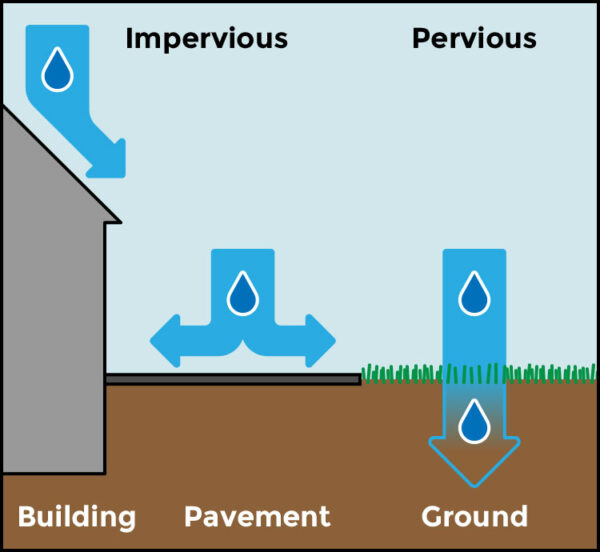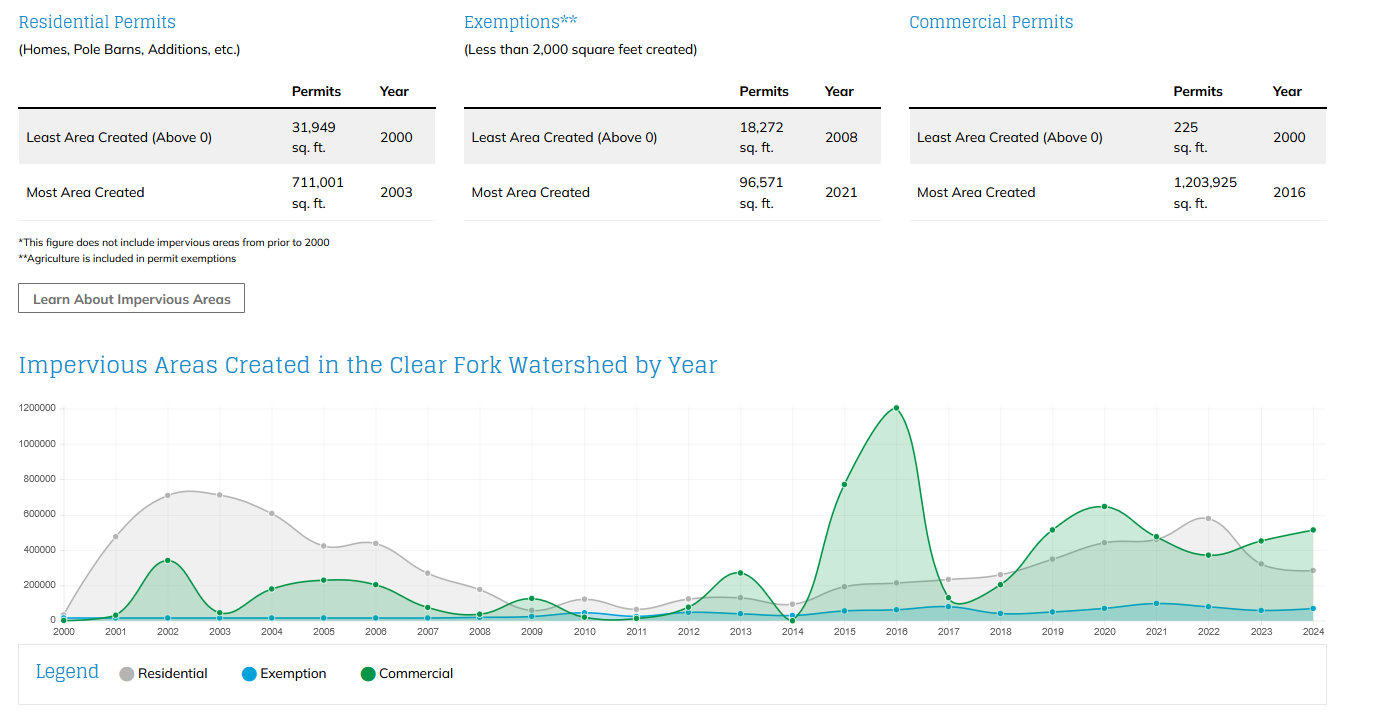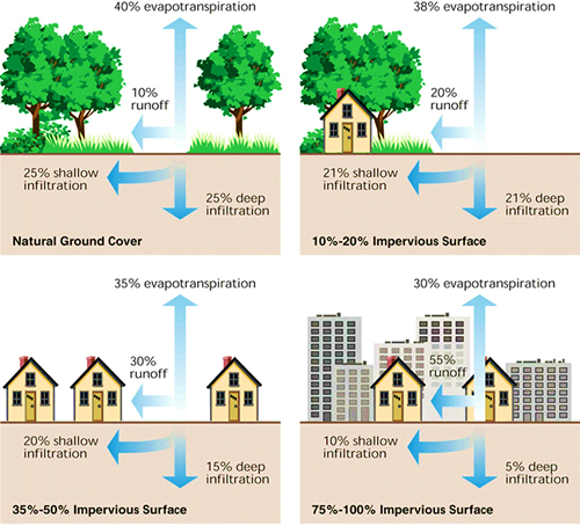The spring rainy season has passed and now we’re in the summer season where rains can be less frequent, but a summer thunderstorm can be quite intense and can dump a lot of rain in a short amount of time. These rain events are needed but relate to a term we use here in the office a lot, impervious area!
Impervious areas are areas that are man-made and do not allow water to contact the soil. Instead, this water is forced to flow off this impervious area, eventually to some type of outlet. A typical outlet is a lawn, road ditch, street, storm sewer or stream. This means that the rain water now gets to an outlet a lot faster than it used to.
Imagine an empty lot full of trees, shrubs and grass. At this point, the whole lot would be considered pervious area. Pervious meaning that when rain falls on the land, it now can penetrate or enter the soil. Some of the water is taken up by the many plant roots. More water soaks into the soil, being absorbed as it goes down. It makes it’s way down by pores & holes in the soil made by old roots, earthworms, animals and insects. Eventually the rain would soak all the way to the water table and some would then be carried to streams. Some water makes it down even further to the ground water. This water has now been filtered by the soil and has recharged our ground water resources. Once the soil has become totally saturated, additional rain would not be absorbed and that water would become runoff, but as you can see it would take quite some time and a lot of water to get to this point.

Now, imagine this empty lot has been sold to someone who wants to build a new home and garage. The soil will be disturbed and a portion of the lot will be developed into impervious area by way of roofs, driveways and sidewalks. That rain water will no longer make it to the soil. Since this water has nowhere to soak, it adds up fast! This becomes runoff immediately.
In the past, the accepted method to deal with impervious runoff was to gather it, put it into a tile or pipe and outlet it directly into a street, road ditch, stream or neighboring property. After many years and thousands of acres of impervious areas developed, it was observed that the rivers and streams began to widen, erode and change course drastically. This was due to all this impervious runoff getting to the stream too quickly and the stream was just adjusting to handle all of this rapid runoff.
Now we’ve learned from our past mistakes, and our focus is to slow impervious water down, giving streams time to handle the runoff. We’re not saying that development can’t happen, we’re saying impervious runoff needs to be managed.
The Stormwater Regulations of Richland County were developed for this purpose. Richland SWCD administers the Stormwater Regulations for the Richland County Commissioners.
On residential sites we encourage applicants to outlet water from their impervious areas onto the soil, on their own property, giving this water a chance to soak into the soils as it did before development. This unlocks the benefit of water soaking into the soil but also slows the water so it’s not getting to the stream too quickly.
On commercial projects, engineers design practices to hold back the very large amounts of impervious runoff that large commercial sites generate. These can consist of detention/retention basins, pervious pavement, rain gardens and underground detention.
Since Richland SWCD began administering the Stormwater program in 2000, we’ve been tracking the amount of impervious areas being developed in square footage. We’ve tracked residential, commercial and agricultural projects and we’ve recently updated our website to include this data all the way to 2024. Please check this out on our website.
If you want to do your part in reducing impervious runoff, you may want to look into installing rain barrels and/or rain gardens on your property. You can also change your downspouts so that they outlet onto your lawn. Even small steps like these help protect our streams and reduce the impact of impervious surfaces in our community.


